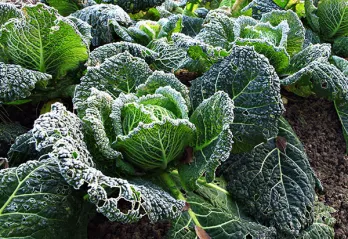Gardening Tip: Winter Is Coming (In a Few Months)

September — It’s getting cold out (at night)
Time to start watching the low temperatures! The first frost usually occurs at the end of September or even the beginning of October, but it can occur earlier. Frost will damage heat loving crops like tomatoes, peppers, eggplants, basil and summer squash.
Many gardeners will harvest the remaining fruits on their plants and protect them indoors when a hard frost threatens. Tomatoes and peppers will continue to ripen on the counter, basil can be hung to dry, and any ripe squash and eggplant that you don’t want to eat can be preserved for the winter.
Another option is to protect plants from a light frost with blankets, sheets or floating row covers. Cold air moves much like water, flowing downhill and collecting and pooling in shallow areas. If you can keep the air flowing by your garden and prevent it from settling on your plants to lower the temperature of their tissue, they can often escape unscathed. In a climate like ours, where fall seems to start and stop, this can make a lot of sense.
Sometimes, you can protect your crop from a frost and get two weeks (or more!) production from it. As we prepare for Fall and Winter, this is your last chance to get a cover crop in part of your garden or plant crops that you are hoping to overwinter. The plants need heat, light and sufficient moisture to grow, and the best way to ensure that they have it is to plant them in August or September.
Our gardening tip is courtesy of Growing Gardens.
